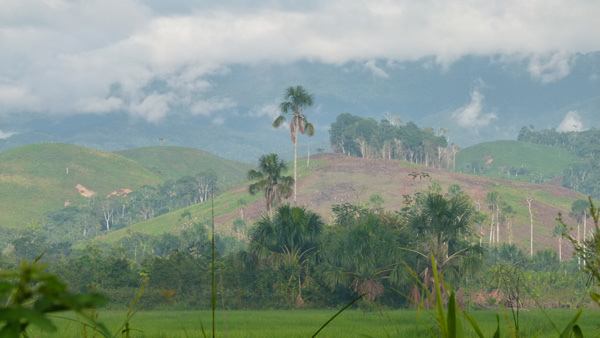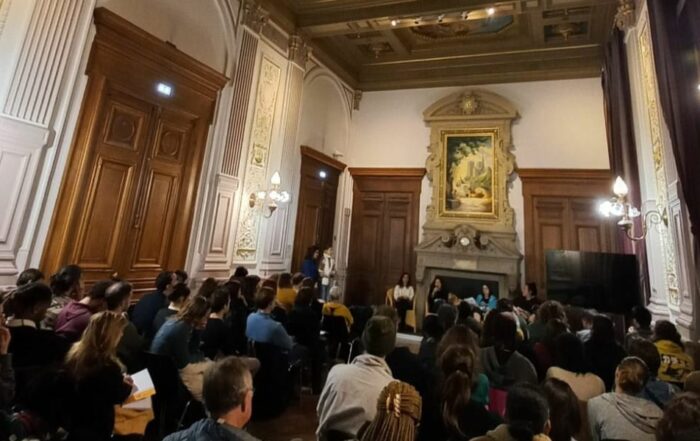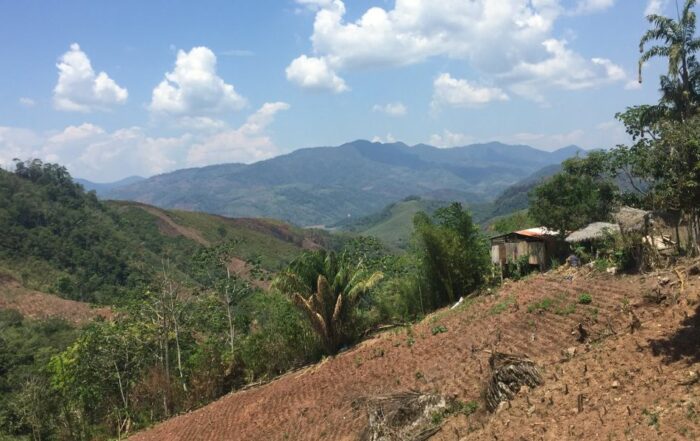Forests are disappearing at an always greater rate, every year patches as large as Greece are destroyed. What are the causes behind this deforestation?
Deforestation at a frightening rate
Deforestation is one of the major causes behind the loss of biodiversity. Between 2000 and 2010, every year, indeed, about 13 million hectares of forest around the world were either damaged or turned into plots of land dedicated to other uses. This figure should be compared to that of the former decade, between 1990 and 2000, 16 million hectares were annually lost, which shows a slight decrease of deforestation. This decline is mainly due to replanting operations in certain countries such as China or India.
However, in areas home to primary tropical forests which are of great value in terms of biodiversity, deforestation and the degradation of forests are still spreading at an alarming rate, about 6 million hectares per year.
The conversion of forests and woods into agricultural lands, or into plantations, is the main cause of this deforestation. Whereas, from a historical point of view, the disappearance of forests first happened in northern countries, the threat now moved to tropical areas.
Amazonia is in the crosshairs
Amazonia is the most prominent victim (53% of global deforestation) with a rate of 4 251 000 forest hectares disappearing every year, or 1350 m² per second that is to say the surface equivalent to a football field every 7 seconds. If this continues, it is estimated that the entirety of the Amazon forest will have disappeared by 2150. 17% of its total surface for that matter has already been wiped out over the past 35 years.
Amazonian soils are being used in the most irrational and anarchical ways among which slash-and-burn practices… It thus tens of thousands of forest hectares that are burned down every year. These fires are typically started by farmers or cattle breeders to create agricultural plots or grazing areas. Often, they go unchecked turning into massive uncontrollable fires that release huge amounts of CO2 into the atmosphere (fires born of deforestation represent 20% of the global CO2 emissions).
The causes of deforestation
Slash and burn, for both cultivation and cattle breeding, is the main cause behind deforestation in Amazonia. The strong agricultural pressure induced by the arrival of settlers coming from the Andes to the Amazonian basin gave rise to intensive agricultural models. Consequently, soils got deeply degraded, barely profitable, and even infertile. Farmers are thus often forced to burn down new patches of land every three years to maintain their productivity. When it comes to cattle breeding, the extensive model used in this region (3 to 6 cows per hectares) necessitates thousands of hectares of land that are cleared and deforested to allow the cattle to graze.
Forest exploitation is the oldest know cause of deforestation. “Clearcutting” and “selective cutting” are deeply harmful, they give way to a massive waste of resources or deprive forests of their natural balance. Only 30% of the cut wood ends up being commercialized. Cattle breeding is the main and direct cause of deforestation.
However, intensive agriculture, by always going deeper into the forest, is also a major factor for deforestation. The prominent cultivation of soy is thriving at the expense of the tropical forest area known as Cerrado in Brazil. In Brazil, the changes in the assignment of plots (that is to say, for example, deciding to convert a forest into a land dedicated to soy cultivation or into a grazing field for cattle) represent about 2/3 of the country’s greenhouse gases.
Services in danger
By being relentlessly attacked and degraded, forests lost parts of their ability to provide ecosystems with vital services. They have indeed become more vulnerable to many dangers such as the proliferation of pest species, diseases, or climate changes.
It is estimated that up to 1 billion hectares, which represents ¼ of all the world’s forest lands, must be restored if we want forest to be able to provide these ecosystemic services again.
Forests are disappearing at an always greater rate, every year patches as large as Greece are destroyed. What are the causes behind this deforestation?
Deforestation at a frightening rate
Deforestation is one of the major causes behind the loss of biodiversity. Between 2000 and 2010, every year, indeed, about 13 million hectares of forest around the world were either damaged or turned into plots of land dedicated to other uses. This figure should be compared to that of the former decade, between 1990 and 2000, 16 million hectares were annually lost, which shows a slight decrease of deforestation. This decline is mainly due to replanting operations in certain countries such as China or India.
However, in areas home to primary tropical forests which are of great value in terms of biodiversity, deforestation and the degradation of forests are still spreading at an alarming rate, about 6 million hectares per year.
The conversion of forests and woods into agricultural lands, or into plantations, is the main cause of this deforestation. Whereas, from a historical point of view, the disappearance of forests first happened in northern countries, the threat now moved to tropical areas.
Amazonia is in the crosshairs
Amazonia is the most prominent victim (53% of global deforestation) with a rate of 4 251 000 forest hectares disappearing every year, or 1350 m² per second that is to say the surface equivalent to a football field every 7 seconds. If this continues, it is estimated that the entirety of the Amazon forest will have disappeared by 2150. 17% of its total surface for that matter has already been wiped out over the past 35 years.
Amazonian soils are being used in the most irrational and anarchical ways among which slash-and-burn practices… It thus tens of thousands of forest hectares that are burned down every year. These fires are typically started by farmers or cattle breeders to create agricultural plots or grazing areas. Often, they go unchecked turning into massive uncontrollable fires that release huge amounts of CO2 into the atmosphere (fires born of deforestation represent 20% of the global CO2 emissions).
The causes of deforestation
Slash and burn, for both cultivation and cattle breeding, is the main cause behind deforestation in Amazonia. The strong agricultural pressure induced by the arrival of settlers coming from the Andes to the Amazonian basin gave rise to intensive agricultural models. Consequently, soils got deeply degraded, barely profitable, and even infertile. Farmers are thus often forced to burn down new patches of land every three years to maintain their productivity. When it comes to cattle breeding, the extensive model used in this region (3 to 6 cows per hectares) necessitates thousands of hectares of land that are cleared and deforested to allow the cattle to graze.
Forest exploitation is the oldest know cause of deforestation. “Clearcutting” and “selective cutting” are deeply harmful, they give way to a massive waste of resources or deprive forests of their natural balance. Only 30% of the cut wood ends up being commercialized. Cattle breeding is the main and direct cause of deforestation.
However, intensive agriculture, by always going deeper into the forest, is also a major factor for deforestation. The prominent cultivation of soy is thriving at the expense of the tropical forest area known as Cerrado in Brazil. In Brazil, the changes in the assignment of plots (that is to say, for example, deciding to convert a forest into a land dedicated to soy cultivation or into a grazing field for cattle) represent about 2/3 of the country’s greenhouse gases.
Services in danger
By being relentlessly attacked and degraded, forests lost parts of their ability to provide ecosystems with vital services. They have indeed become more vulnerable to many dangers such as the proliferation of pest species, diseases, or climate changes.
It is estimated that up to 1 billion hectares, which represents ¼ of all the world’s forest lands, must be restored if we want forest to be able to provide these ecosystemic services again.






